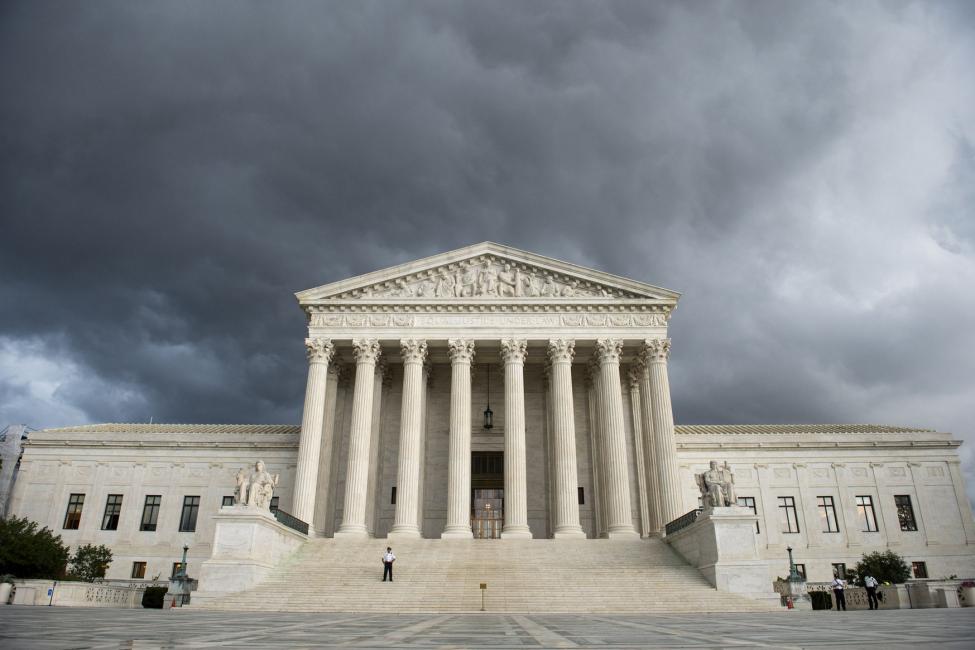WASHINGTON, March 3 (UPI) — Another effort by the Trump administration to crack down on migrants seeking asylum at the U.S.-Mexico border made its way to the U.S. Supreme Court.
The case — DHS vs. Thuraissigiam — seeks to determine whether immigrants referred for “expedited removal” from the United States are entitled to a day in court before a neutral federal judge.
Created by Congress in 1996, expedited removal is a fast-track procedure that functions as a quick alternative to regular deportation proceedings and bypasses immigration court. The process empowers asylum officers to determine on their own whether an individual arriving at the border without proper documents can be removed from U.S. soil without the need for a hearing before an immigration judge.
Since taking office in 2017, President Donald Trump has repeatedly threatened mass deportations, and his administration has vowed to speed up removals. Monday’s case tests the ability of asylum seekers to challenge their impending deportation.
“Asylum seekers and potentially millions of other unknowns, non-citizens, inside the country could be summarily expelled without any judicial review or without even any administrative review,” Lee Gelernt, an attorney for the American Civil Liberties Union, told justices Monday.
“The political branches undoubtedly have enormous power in the immigration area, but the one thing it cannot do, and this court has never allowed them to do, is remove a check on themselves,” he said.
Gelernt represents Vijayakumar Thuraissigiam, a Sri Lankan asylum seeker who fled his home in 2016 and crossed illegally into the United States over the southern border.
Thuraissigiam is a member of the Tamil ethnic minority, which has been historically persecuted by the Sri Lankan government over many decades. Tensions boiled over in a brutal and protracted civil war between the Tamil Tigers terrorist organization and the Sinhala-majority government. The war ended in 2009 with the deaths of tens of thousands of civilians in the Tamil-dominated northern and eastern parts of the country.
Thuraissigiam was working after the war on a Tamil politician’s campaign, when he was abducted in a white van by Sri Lankan intelligence officials, beaten and tortured, court records show. He was repeatedly dunked into a well as the men interrogated him about his political activity. Later regaining consciousness in a hospital bed, he went into hiding and planned an escape to South America.
Over eight months spanning from 2016 to early 2017, he traveled through Latin America and walked across the border near Tijuana, Mexico, in February. U.S. Customs and Border Protection agents picked him up 25 yards north of the border, without any papers.
Under expedited removal, an asylum officer conducts a short screening interview to establish the asylum seeker has a “credible fear” of returning to his home country. Individuals deemed eligible for protection can receive a full asylum hearing. However, data published by U.S. Citizenship and Immigration Services shows there has been a sharp decline in approval rates of credible fear interviewees under the Trump administration.
The officer in Thuraissigiam’s interview determined he did not meet the threshold to establish a credible fear of persecution, but Gelernt said it was a rushed process that never afforded his client a fair chance.
“His asylum officer hearing was an hour and eight minutes, and that includes translation,” Gelernt said. “So, to read the Q&A that he had from his asylum officer, it’s about a five-minute read. He then had a 13-minute review by an immigration judge without a lawyer.
“So, the maximum he got was under an hour and a half for total review, without a lawyer, half of which was taken by translation, and now he’s facing almost certain persecution if he’s sent back home.”
Thuraissigiam sued the Department of Homeland Security in federal district court in Los Angeles, but the judge dismissed the case on the basis that Congress had determined the appropriate level of due process for expedited removal orders. The 9th Circuit Court of Appeals later reversed this decision, prompting the Trump administration to appeal the case before the Supreme Court.
Lawyers for the government argued Congress had set the right precedent to follow. In his prepared remarks before the justices, Edwin Kneedler, deputy solicitor general of the Department of Justice, argued “fact-laden review” for asylum seekers would “bog down the system” and undermine the purpose of expedited removal.
“How far can it go? How many appeals?” said Christopher Hajec, director of litigation at the conservative Immigration Law Reform Institute. “Congress made the decision that there’s one.”
A flood of major lawsuits on immigration has inundated the high court in recent months. Immigrant rights groups have mounted several challenges to the administration’s policies, but the Supreme Court, which has a 5-4 conservative majority, has blocked numerous rulings issued in federal district and circuit courts.
Last week, Justice Sonia Sotomayor called out the government and the court’s recent behavior in a dissent to the ruling on another contentious immigration lawsuit. In Monday’s session, she once again expressed concern.
“The whole idea of freedom — life, liberty, freedom — is that you have a right to remain if you have a right to remain.”


